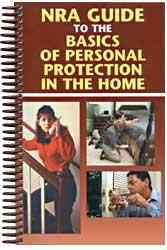There’s a new gun in town, pardon the pun, when it comes to news about gun violence. It’s called The Trace, and it’s a Bloomberg-backed web informational startup that may turn out to be a very important development in the ongoing debate about guns. It’s not a blog and thank God doesn’t let readers post their comments after each story so what we get is a combination of content from various media outlets plus in-depth reportage from Trace writers themselves. In other words, it’s a real online newspaper entirely devoted to the question of what to do about guns.
 Well, not so much what to do about guns, but what to do about gun violence. Which is what distinguishes it somewhat from the NRA media outlets which never mention ‘guns’ and ‘violence’ in the same sentence because guns don’t have anything to do with violence at all. That guns account for 30,000 deaths and 60,000 injuries each year – that’s just a figment of the Bloomberg imagination. And the number of gun violence incidents that is updated (and undercounted) every day on the front page of The Trace? A small price to pay for those millions of crimes that are prevented by all those armed citizens patrolling their homes and streets with guns. Like the way George Zimmerman was patrolling his street, remember?
Well, not so much what to do about guns, but what to do about gun violence. Which is what distinguishes it somewhat from the NRA media outlets which never mention ‘guns’ and ‘violence’ in the same sentence because guns don’t have anything to do with violence at all. That guns account for 30,000 deaths and 60,000 injuries each year – that’s just a figment of the Bloomberg imagination. And the number of gun violence incidents that is updated (and undercounted) every day on the front page of The Trace? A small price to pay for those millions of crimes that are prevented by all those armed citizens patrolling their homes and streets with guns. Like the way George Zimmerman was patrolling his street, remember?
Anyway, the point is that this new venture not only injects some reality into the gun debate (boy, are the gun nuts going to whack me around about that one) but, as far as I know, it’s the only media outlet whose entire focus is on gun violence and, what gives it real strength, is that the content is not dependent on the usual snip-snip from other online sources, because in addition to links here and there, you can read original stories by experienced journalists like Alex Yablon and Jennifer Mascia, both of whom have covered gun issues for such small-time outfits as New York Magazine and The New York Times.
In an interview, one of the site’s financial backers stated that the online publication would aim at winning a Pulitzer. I like that approach for two reasons. First, it’s refreshing that anyone would set their sights so high, given the schlock that usually passes for information in the gun world. More important, this venture may be able to do what nobody else seems inclined to do when it comes to guns, namely, to reach beyond the ranks of the most committed pro-gun or anti-gun activists and engage the wider audience in the debate about gun violence. If The Trace becomes known as a source for original, first-class writing, it will attract a readership that, generally speaking, wouldn’t otherwise be interested in anything having to do with guns. And those are the people who can and should play a much more informed and active role in this state of affairs.
The second reason I like this new effort is that Pulitzer-level reporting not only requires an attention to detail and honesty bolstered by facts, but also demands that the story-line embraces the whole informational spectrum, no matter whose precious ox gets gored. In this respect, the staff of The Trace may find themselves on occasion having to deliver critical, rather than informational reports on activities carried out by the gun-sense side, but that will only increase their credibility with the non-affiliated audience that the gun debate needs to attract.
I went to my first anti-war demonstration in 1964, but it wasn’t until 1972 that everyone agreed that we were fighting the wrong war in the wrong place at the wrong time. And this happened because Frances Fitzgerald published a story, “Fire In The Lake,” in The New Yorker Magazine, which then became a best-selling book. The book won a Pulitzer and all of a sudden everyone was talking about nothing other than Viet Nam. It could happen again around the issue of gun violence and it could happen again because someone publishes exactly the right story in The Trace. Ultimately, words are much more powerful than bullets or guns.

Recent Comments